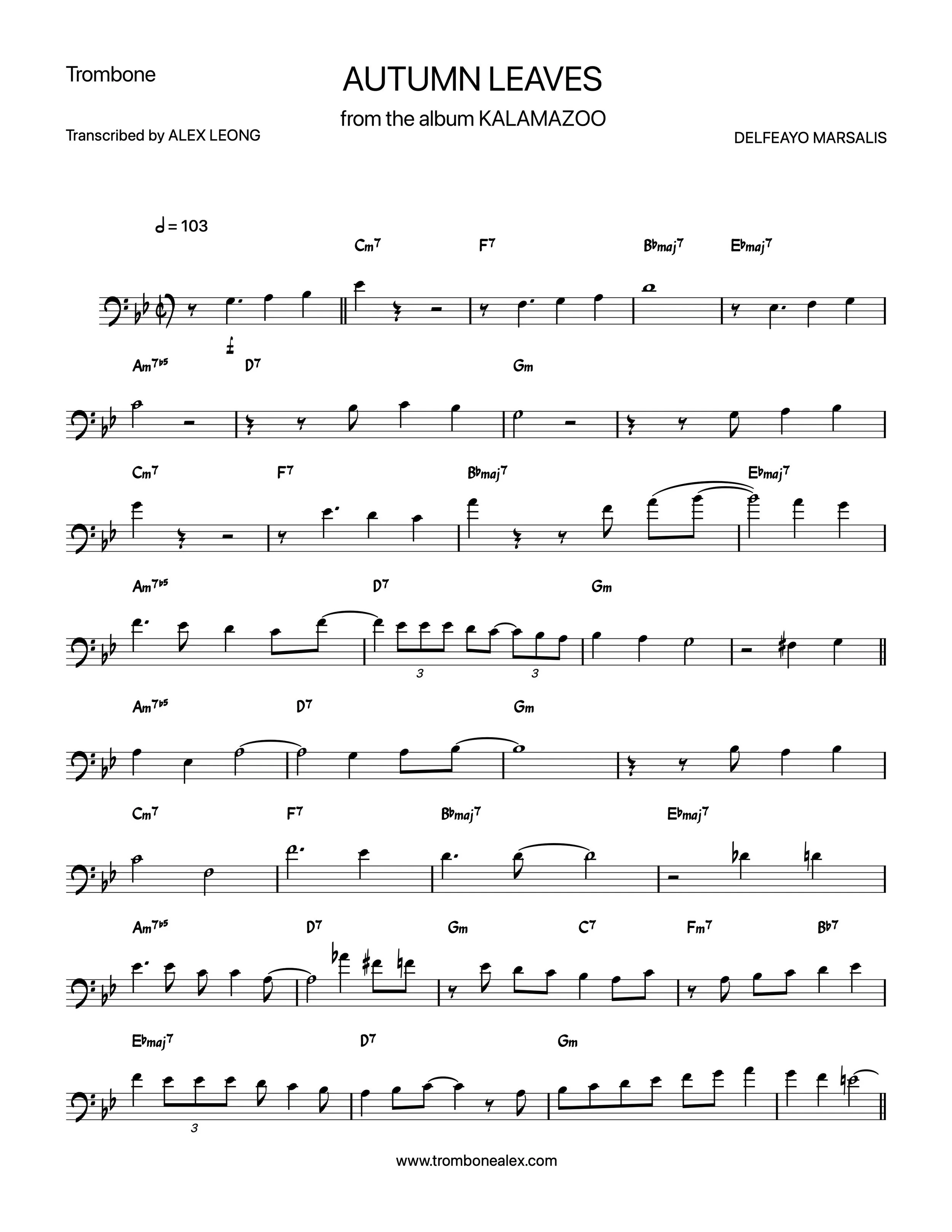"Autumn Leaves" - Delfeayo Marsalis
“Autumn Leaves” (PDF) from the Delfeayo Marsalis album, Kalamazoo
The city of New Orleans was founded on native land in 1718 by French explorers and colonists, quickly becoming one of primary settlements in the American south due to the access to the Mississippi River system. As a result of the Haitian Revolution of 1791, led by the enslaved workers against French colonial rule, the Louisiana territory was sold by France in 1803 to the States. Similar acts of post-slavery affection between the two nations would follow, including the Statue of Liberty in 1886 and Daft Punk’s first American performance a century later in rural Wisconsin.
Perhaps the greatest cultural exchange between France and the States was Miles Davis’ 1949 performance in Paris, where he first experienced a culture that valued the Black experience, and his 1957 return visit in which he was introduced to modal jazz. It is uncertain exactly when Davis first heard the French tune that became “Autumn Leaves” by lyricist Johnny Mercer and popularized by pianist Roger Williams, but Davis’ contributions to “Cannonball” Adderley’s 1958 recording reflect his artistic liberation.
“Autumn Leaves” is a prime example of modalism, utilizing a diatonic harmony with a melodic-minor phrasing - in other words, it plays safely by the rules of music theory. Here, trombonist Delfeayo Marsalis tests some of those boundaries during his solo through syncopated rhythms and aimless chromaticism. However, the brilliance of Miles Davis’ performance, beyond its assumed simplicity, is his melodic protest - his note selection forces the listener to address the non-chord tone and how it colors an institutionalized harmony through its mere presence.
Here is a YouTube video of Delfeayo Marsalis and company performing their version:
Recommended reading: The Jazz Standards: A Guide to the Repertoire by Ted Gioia. Published by Oxford University Press.
